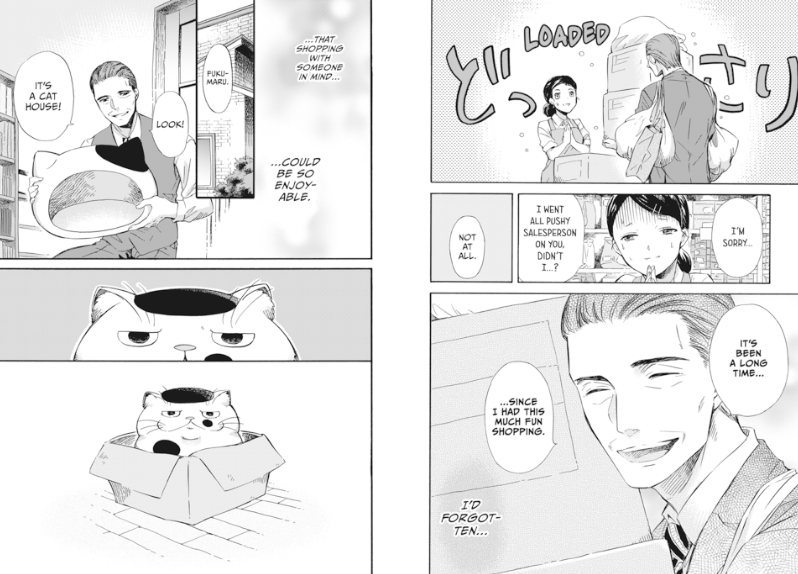The Ice Guy and the Cool Girl, Volume 1 by Miyuki Tonogaya
I was curious about this manga, because I’ve heard good things about the anime, which I have not watched yet. The premise of a man descended from snow spirits and his evolving relationship with his work colleague sounded amusing. This series started off being serialized online, and that definitely shows in the episodic nature of the early chapters and the same humorous situation being repeated multiple times. Fortunately, I enjoy scenes of people being overcome with emotions over and over again. I think pacing out reading the first volume over a period of a few days would make for a less repetitive reading experience, and it certainly was pleasant to dip in and out of this manga.
Himuro is the decedent of a snow spirit, and his heritage causes him to have incidents where he inadvertently chills or freezes things in his environment. Fuyutsuki is pretty self-contained, but she does notice Himuro’s challenges and tries to come up with ways to make his life easier. She brings in straw that he can use to insulate the flowers he likes so they won’t freeze over, and brings him cat whiskers as a good luck charm when she realizes that he can’t pet a real cat. Fuyutsuki’s deadpan expression and lack of awareness about her emerging crush provide a contrast to Himuro’s over the top realizations of his feelings for her, which usually involve being overcome with emotion and causing a blizzard in his immediate vicinity. Tonogaya’s art is expressive and the contrast between Himuro’s over the top reactions and Fuyutsuki’s self-contained demeanor is funny. I really liked the bonus story at the end, because it gave a bit more insight into Fuyutsuki’s internal thoughts. Overall, this is a pleasant manga to keep on the reading pile, flipping through a few pages now and then for a bit of cute romantic comedy whenever it is needed.





 After doing my duty on Facebook, I clicked over to the main site to get my free manga, and encountered possibly the most maddening registration/login process I’ve dealt with in years. Though I’d apparently created an account back when they first launched (which I discovered when my chosen username was already in use), even after going through their process to recover my password, I then had to log in at least three times, on three different pages, before even getting to the page where I could actually pick out my free manga.
After doing my duty on Facebook, I clicked over to the main site to get my free manga, and encountered possibly the most maddening registration/login process I’ve dealt with in years. Though I’d apparently created an account back when they first launched (which I discovered when my chosen username was already in use), even after going through their process to recover my password, I then had to log in at least three times, on three different pages, before even getting to the page where I could actually pick out my free manga.  After my experience with Square Enix, the idea of trying to navigate yet another online manga portal was difficult to stomach, but Viz Manga’s new initiative, Vizmanga.com, was a bit too enticing to ignore. Working in sync with Viz’s mobile apps, Vizmanga.com offers the opportunity to buy volumes of digital manga via any one of its available portals, and then read those volumes using any of them, with the user’s purchased manga always available for download on any supported device.
After my experience with Square Enix, the idea of trying to navigate yet another online manga portal was difficult to stomach, but Viz Manga’s new initiative, Vizmanga.com, was a bit too enticing to ignore. Working in sync with Viz’s mobile apps, Vizmanga.com offers the opportunity to buy volumes of digital manga via any one of its available portals, and then read those volumes using any of them, with the user’s purchased manga always available for download on any supported device.